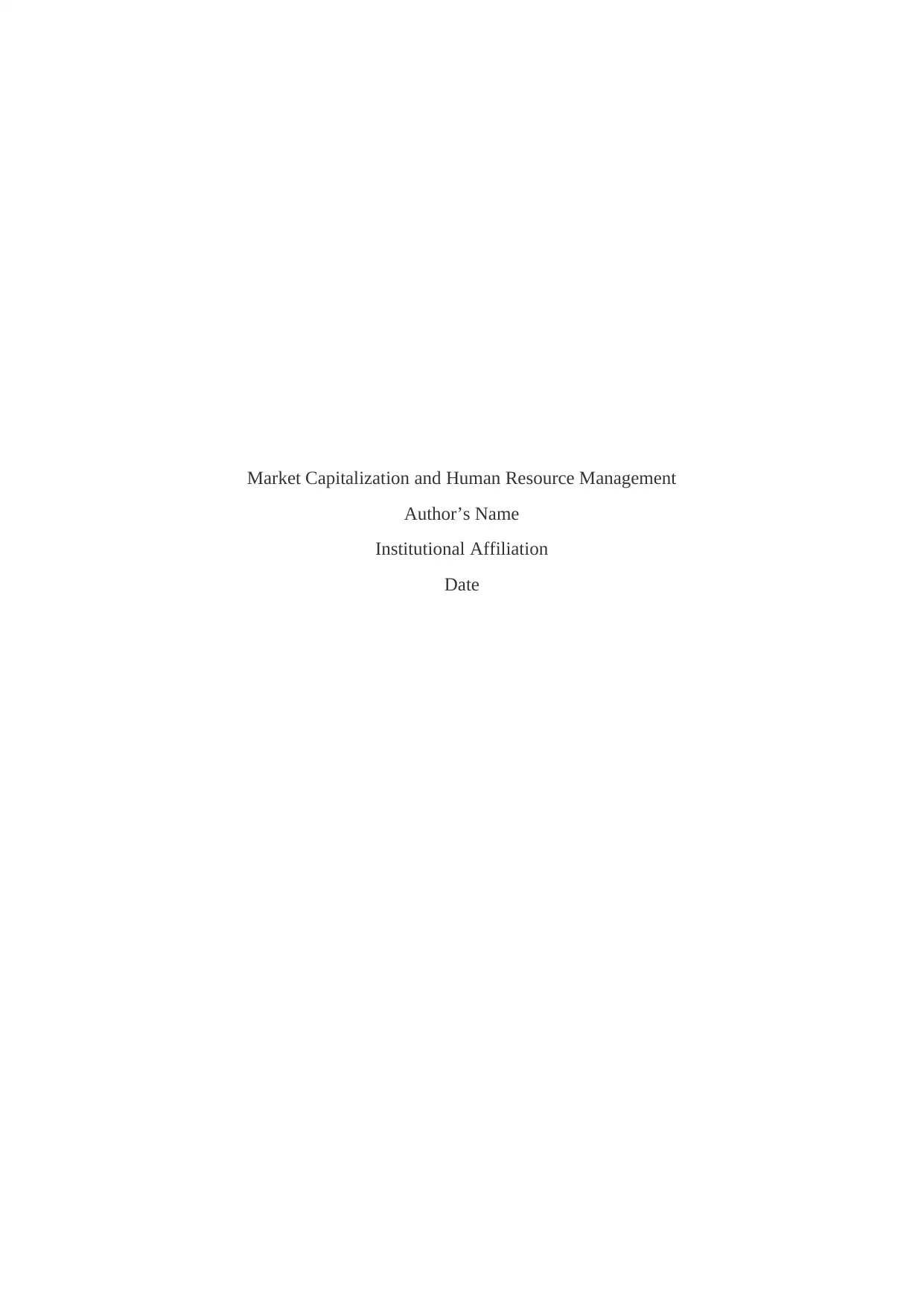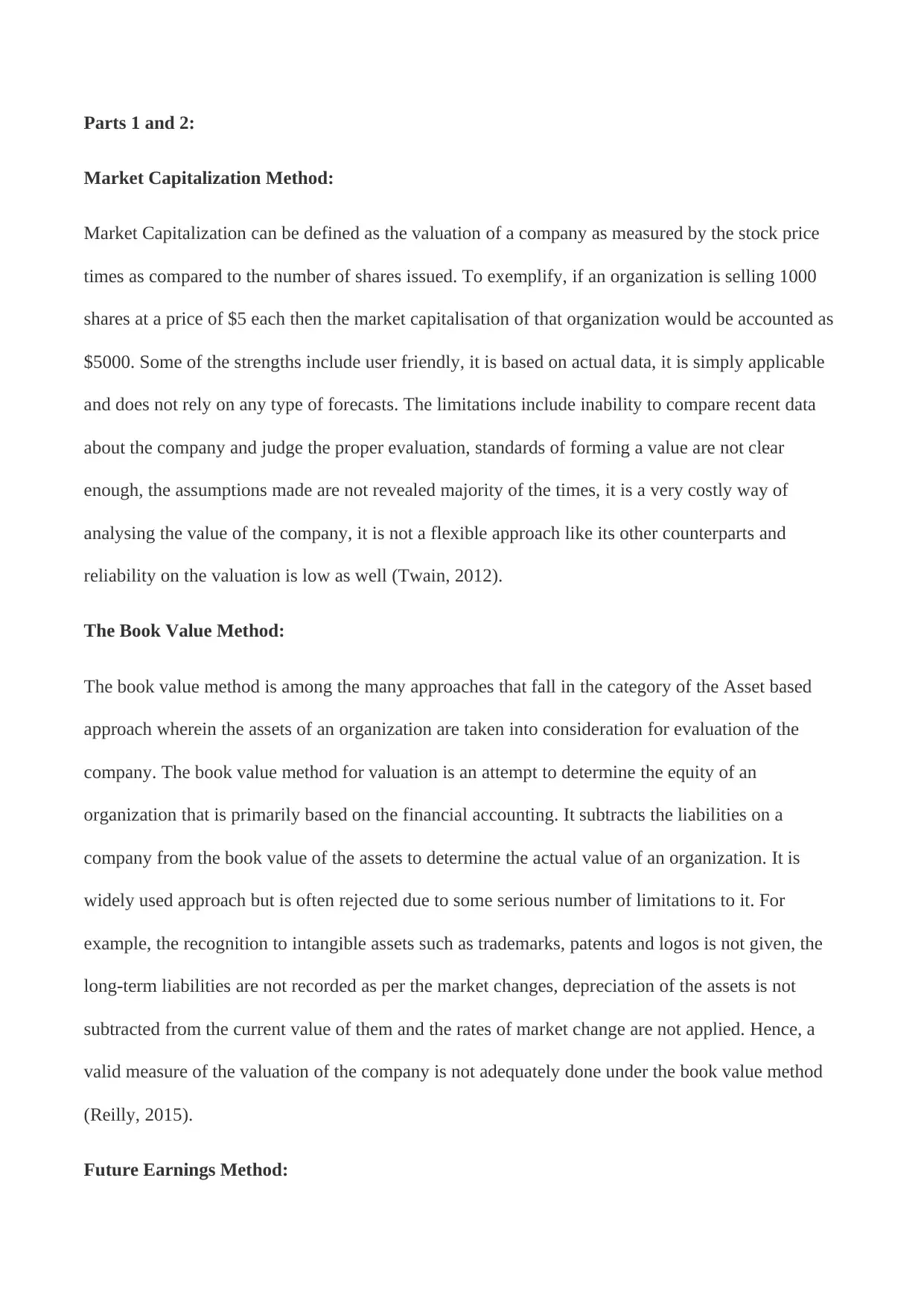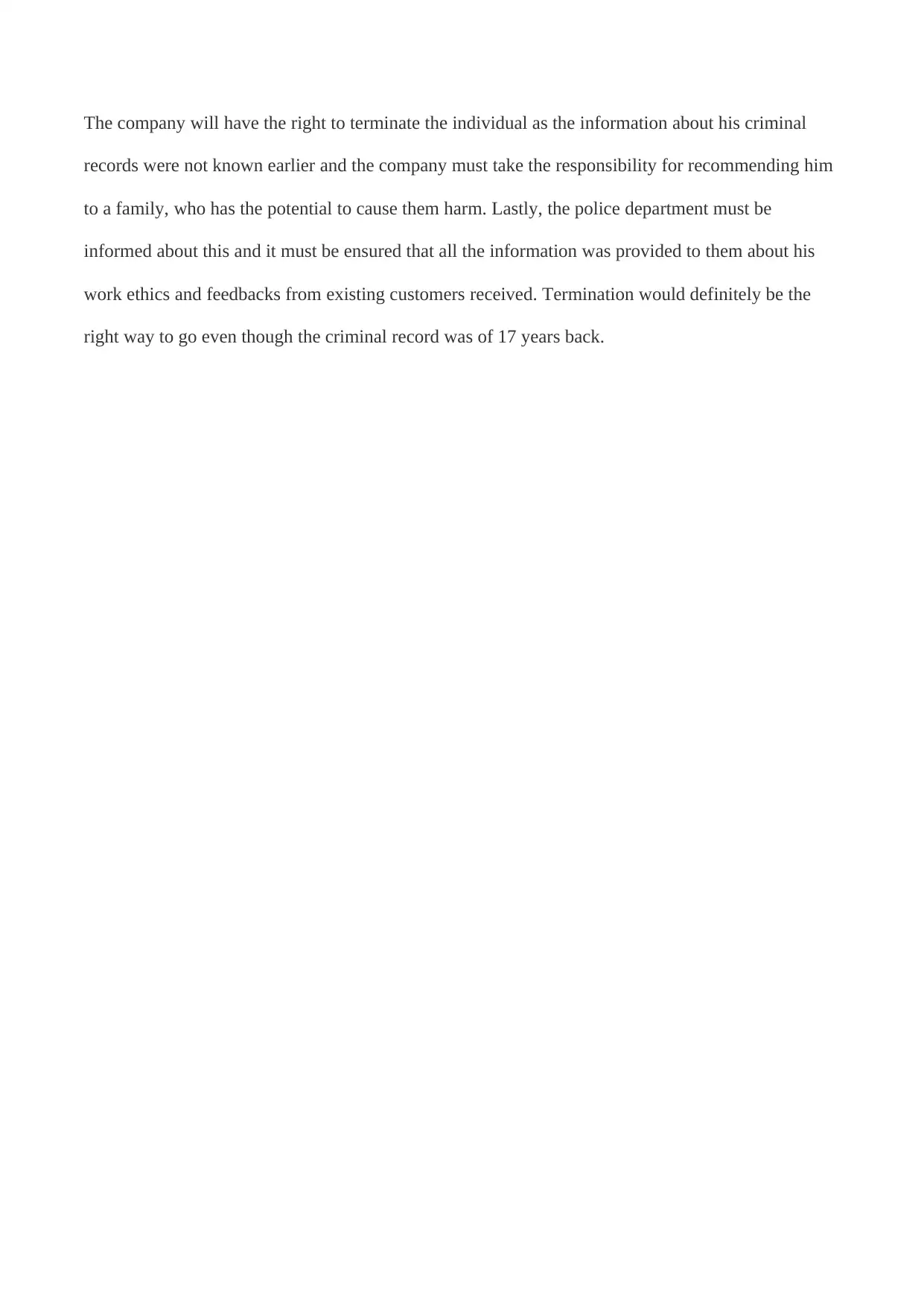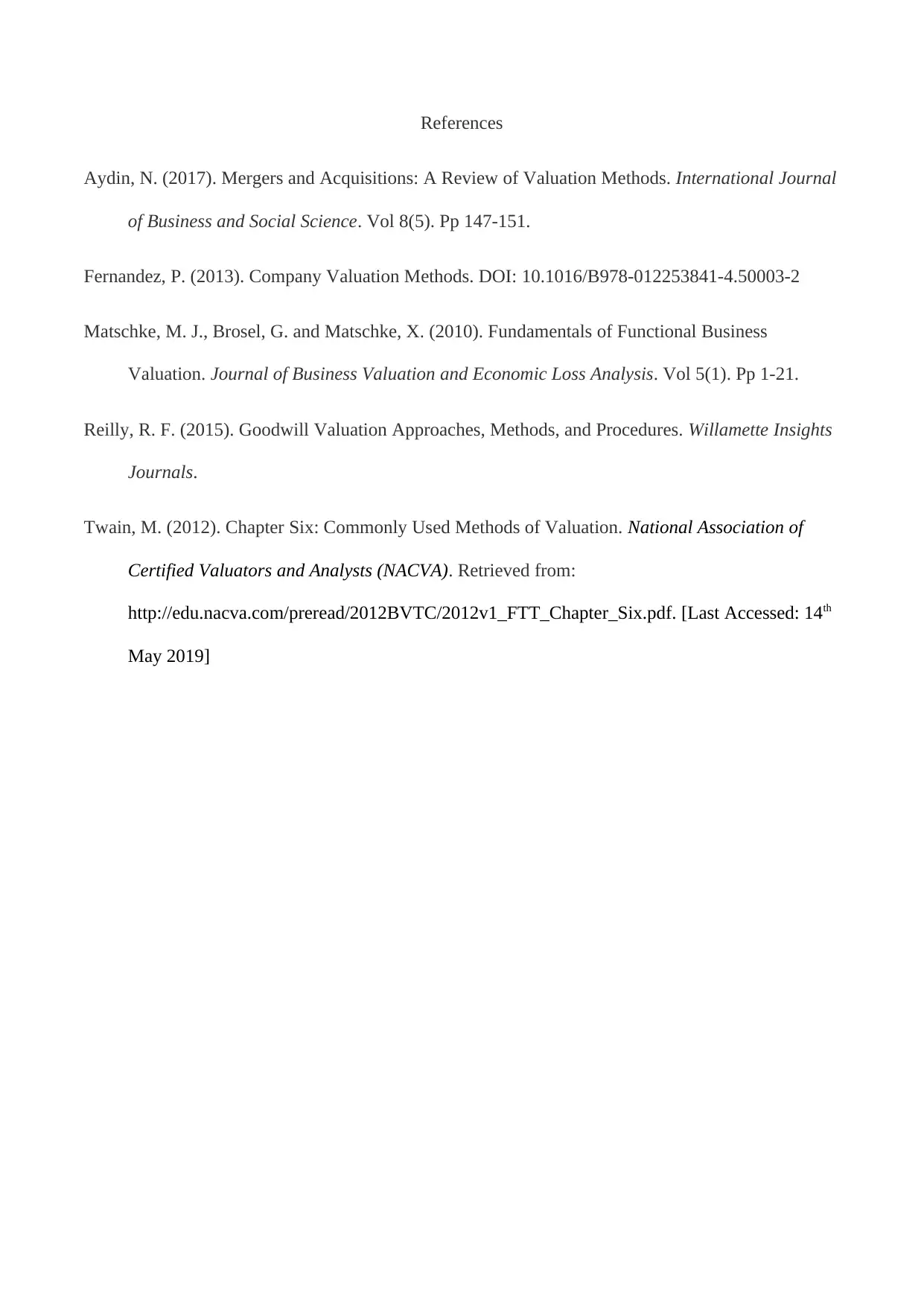Market Capitalization, HR, and Discrimination: A Case Study Analysis
VerifiedAdded on 2023/03/23
|7
|1834
|99
Case Study
AI Summary
This assignment presents a comprehensive case study analysis focusing on market capitalization methods, human resource management, and workplace discrimination. The first part of the assignment explores various valuation methods, including market capitalization, book value, and future earnings, comparing their strengths and weaknesses. The second part delves into strategies for addressing and eliminating workplace discrimination through training and feedback mechanisms. The third part offers a case study, "Personally Yours: The Negligent Hiring/Retention Case," analyzing a scenario involving background checks and potential risks associated with hiring decisions. The assignment emphasizes the importance of thorough background checks, legal compliance, and maintaining a positive company image. The analysis covers the legal and ethical implications of hiring decisions and the potential impact on the company's reputation and business operations.

Market Capitalization and Human Resource Management
Author’s Name
Institutional Affiliation
Date
Author’s Name
Institutional Affiliation
Date
Paraphrase This Document
Need a fresh take? Get an instant paraphrase of this document with our AI Paraphraser

Parts 1 and 2:
Market Capitalization Method:
Market Capitalization can be defined as the valuation of a company as measured by the stock price
times as compared to the number of shares issued. To exemplify, if an organization is selling 1000
shares at a price of $5 each then the market capitalisation of that organization would be accounted as
$5000. Some of the strengths include user friendly, it is based on actual data, it is simply applicable
and does not rely on any type of forecasts. The limitations include inability to compare recent data
about the company and judge the proper evaluation, standards of forming a value are not clear
enough, the assumptions made are not revealed majority of the times, it is a very costly way of
analysing the value of the company, it is not a flexible approach like its other counterparts and
reliability on the valuation is low as well (Twain, 2012).
The Book Value Method:
The book value method is among the many approaches that fall in the category of the Asset based
approach wherein the assets of an organization are taken into consideration for evaluation of the
company. The book value method for valuation is an attempt to determine the equity of an
organization that is primarily based on the financial accounting. It subtracts the liabilities on a
company from the book value of the assets to determine the actual value of an organization. It is
widely used approach but is often rejected due to some serious number of limitations to it. For
example, the recognition to intangible assets such as trademarks, patents and logos is not given, the
long-term liabilities are not recorded as per the market changes, depreciation of the assets is not
subtracted from the current value of them and the rates of market change are not applied. Hence, a
valid measure of the valuation of the company is not adequately done under the book value method
(Reilly, 2015).
Future Earnings Method:
Market Capitalization Method:
Market Capitalization can be defined as the valuation of a company as measured by the stock price
times as compared to the number of shares issued. To exemplify, if an organization is selling 1000
shares at a price of $5 each then the market capitalisation of that organization would be accounted as
$5000. Some of the strengths include user friendly, it is based on actual data, it is simply applicable
and does not rely on any type of forecasts. The limitations include inability to compare recent data
about the company and judge the proper evaluation, standards of forming a value are not clear
enough, the assumptions made are not revealed majority of the times, it is a very costly way of
analysing the value of the company, it is not a flexible approach like its other counterparts and
reliability on the valuation is low as well (Twain, 2012).
The Book Value Method:
The book value method is among the many approaches that fall in the category of the Asset based
approach wherein the assets of an organization are taken into consideration for evaluation of the
company. The book value method for valuation is an attempt to determine the equity of an
organization that is primarily based on the financial accounting. It subtracts the liabilities on a
company from the book value of the assets to determine the actual value of an organization. It is
widely used approach but is often rejected due to some serious number of limitations to it. For
example, the recognition to intangible assets such as trademarks, patents and logos is not given, the
long-term liabilities are not recorded as per the market changes, depreciation of the assets is not
subtracted from the current value of them and the rates of market change are not applied. Hence, a
valid measure of the valuation of the company is not adequately done under the book value method
(Reilly, 2015).
Future Earnings Method:

The future earnings method falls in the category of the Income Approach. It is also known as the
Capitalization of Earnings Method. The primary basis of this approach is to judge a company based
on the benefits that it is expected to incur in the near future. For example, the cash flows that are
expected to be generated or the earnings that it anticipates on making. The benefits of these future
earnings are then carried out based on the capitalization rates. The major advantage of this approach
is that it includes the tangible and the intangible assets both into account. It does not make an attempt
to separate the values of both types of assets or ignore them in taking out the actual valuation of a
company. Apart from this, it is based on three main aspects i.e. estimated future benefits, rate of
return, investments and the overall estimation of the value of the company in general. However, it
removes all the income that is expected to be generated from liabilities or assets that are not
operational. This method is mainly adopted by businesses to evaluate its actual return on investment
(Fernandez, 2013).
Comparative Analysis of the Valuation Methods
Every valuation method has its own set of pros and cons. From the market valuation method
perspective, the valuation has its own set of drawbacks since it takes into account certain
assumptions and at times does not rest on the recent numbers that the company has recorded. The
book value method on the other hand has its drawbacks as well since it is primarily based on the
tangible assets. In this digitized world, the need to account the intangible benefits has become the
need of the hour. Hence, the inclusion of intangible assets of an organization cannot be ignored. The
income method thus proposes the maximum number of benefits since it accounts the recent financial
information, the tangible and the intangible assets (Matschke, Brosel and Matschke, 2010). It is
understood to have covered the drawbacks of all the other two methods and assists in giving an
actual overview of the valuation of the company. However, experts are of the opinion that the
income method of valuation is more theoretical and hasn’t been adopted by organizations to a very
Capitalization of Earnings Method. The primary basis of this approach is to judge a company based
on the benefits that it is expected to incur in the near future. For example, the cash flows that are
expected to be generated or the earnings that it anticipates on making. The benefits of these future
earnings are then carried out based on the capitalization rates. The major advantage of this approach
is that it includes the tangible and the intangible assets both into account. It does not make an attempt
to separate the values of both types of assets or ignore them in taking out the actual valuation of a
company. Apart from this, it is based on three main aspects i.e. estimated future benefits, rate of
return, investments and the overall estimation of the value of the company in general. However, it
removes all the income that is expected to be generated from liabilities or assets that are not
operational. This method is mainly adopted by businesses to evaluate its actual return on investment
(Fernandez, 2013).
Comparative Analysis of the Valuation Methods
Every valuation method has its own set of pros and cons. From the market valuation method
perspective, the valuation has its own set of drawbacks since it takes into account certain
assumptions and at times does not rest on the recent numbers that the company has recorded. The
book value method on the other hand has its drawbacks as well since it is primarily based on the
tangible assets. In this digitized world, the need to account the intangible benefits has become the
need of the hour. Hence, the inclusion of intangible assets of an organization cannot be ignored. The
income method thus proposes the maximum number of benefits since it accounts the recent financial
information, the tangible and the intangible assets (Matschke, Brosel and Matschke, 2010). It is
understood to have covered the drawbacks of all the other two methods and assists in giving an
actual overview of the valuation of the company. However, experts are of the opinion that the
income method of valuation is more theoretical and hasn’t been adopted by organizations to a very
⊘ This is a preview!⊘
Do you want full access?
Subscribe today to unlock all pages.

Trusted by 1+ million students worldwide

large extent yet. Considering the varied assets that the companies tend to hold today, the income
methods of valuation can be recorded as more contemporary than its counterparts (Aydin, 2017).
Part 3: Discrimination at the Workplace
The most challenging concept to create a manager training or a professional development session
would be for the elimination of discrimination in an organization. It is easy to specify and provide a
theoretical framework or session to help individuals overcome the usual ways they discriminate
against their friends or colleagues whether it is knowingly or unknowingly. In order to overcome the
very basis of employee discrimination in the organization, the first strategy is to offer a feedback
form to the employees to gain information about the way discrimination is done and the employees
who are more likely to do it. Secondly, a professional session can be held to showcase some similar
instances in which discrimination is being done and ways in which the smallest of gestures tend to
offend other people. Discrimination can be based on gender, caste, religion, culture, race, social
status etc. It is important for all employees to understand the different types of discriminations and
the best practices through which a more comfortable environment for all can be provided. Thirdly, a
close watch and continuous feedback can be taken to understand if any changes in the organization
have been identified post the completion of the training session. Lastly, a deliberate organization of a
team on the professional front needs to be done for people to accept individuals from different
backgrounds and learn to respect them. Extra-curricular activities outside the professional workspace
can be another means through which these challenges can be easily overcome and the team members
can work together without offending each other in any manner.
Part 4: Case Study Two: Personally Yours: The Negligent Hiring/Retention Case
Part 1: Assuming the role of Gary Garcia, it is completely understandable that the need to do a
methods of valuation can be recorded as more contemporary than its counterparts (Aydin, 2017).
Part 3: Discrimination at the Workplace
The most challenging concept to create a manager training or a professional development session
would be for the elimination of discrimination in an organization. It is easy to specify and provide a
theoretical framework or session to help individuals overcome the usual ways they discriminate
against their friends or colleagues whether it is knowingly or unknowingly. In order to overcome the
very basis of employee discrimination in the organization, the first strategy is to offer a feedback
form to the employees to gain information about the way discrimination is done and the employees
who are more likely to do it. Secondly, a professional session can be held to showcase some similar
instances in which discrimination is being done and ways in which the smallest of gestures tend to
offend other people. Discrimination can be based on gender, caste, religion, culture, race, social
status etc. It is important for all employees to understand the different types of discriminations and
the best practices through which a more comfortable environment for all can be provided. Thirdly, a
close watch and continuous feedback can be taken to understand if any changes in the organization
have been identified post the completion of the training session. Lastly, a deliberate organization of a
team on the professional front needs to be done for people to accept individuals from different
backgrounds and learn to respect them. Extra-curricular activities outside the professional workspace
can be another means through which these challenges can be easily overcome and the team members
can work together without offending each other in any manner.
Part 4: Case Study Two: Personally Yours: The Negligent Hiring/Retention Case
Part 1: Assuming the role of Gary Garcia, it is completely understandable that the need to do a
Paraphrase This Document
Need a fresh take? Get an instant paraphrase of this document with our AI Paraphraser

background check on all the employees is extremely essential considering the kind of employers or
clients that the company has. As Gary Garcia has attended the seminar, it would be most appropriate
for her to conduct the background check along with her branch manager and other professionals in
the HR department. In fact, the federal and state governments of the country also offer guidelines
wherein it is important to do a background check of every individual before hiring him/her. Since
this was not considered to be an important aspect earlier, the company will have to take great care in
ensuring that the information about background check is given to employees in the right manner to
ensure that there are no negative feelings among them. It can be communicated that under the legal
regulations that every medium sized company has to follow, a background check with the police
department, social services and previous employers will be done. The company must include every
employee who works in the organization to go through the same process (those who weren’t in the
past) to send a clear message that the screening is being carried out for everyone equally and no
special treatments will be given. In this manner, there will be no scope for biased feelings and the
verification of every employee can be done with precision.
Part 2: In this case, there are a number of aspects that need to be taken into consideration. The
foremost aspect is that the offense was committed about 17 years ago and since there have been no
complaints against that individual in the criminal records of the police department. Secondly, the
individual is working in a private firm as a handyman and hence he is not violating any law. Thirdly,
his work is primarily in the homes of other people and thus the school aspect also is not violated.
However, the company’s reputation is based on the people who work for them and the individuals or
experts that the company sends to other people’s homes to take care of the small jobs. In case that
individual is caught in any kind of criminal activities, the company might have to face legal
obligations and might receive a strong impact on its brand image in the Florida region. It might also
hamper the overall business to a large extent as families might not be able to trust them in the future.
clients that the company has. As Gary Garcia has attended the seminar, it would be most appropriate
for her to conduct the background check along with her branch manager and other professionals in
the HR department. In fact, the federal and state governments of the country also offer guidelines
wherein it is important to do a background check of every individual before hiring him/her. Since
this was not considered to be an important aspect earlier, the company will have to take great care in
ensuring that the information about background check is given to employees in the right manner to
ensure that there are no negative feelings among them. It can be communicated that under the legal
regulations that every medium sized company has to follow, a background check with the police
department, social services and previous employers will be done. The company must include every
employee who works in the organization to go through the same process (those who weren’t in the
past) to send a clear message that the screening is being carried out for everyone equally and no
special treatments will be given. In this manner, there will be no scope for biased feelings and the
verification of every employee can be done with precision.
Part 2: In this case, there are a number of aspects that need to be taken into consideration. The
foremost aspect is that the offense was committed about 17 years ago and since there have been no
complaints against that individual in the criminal records of the police department. Secondly, the
individual is working in a private firm as a handyman and hence he is not violating any law. Thirdly,
his work is primarily in the homes of other people and thus the school aspect also is not violated.
However, the company’s reputation is based on the people who work for them and the individuals or
experts that the company sends to other people’s homes to take care of the small jobs. In case that
individual is caught in any kind of criminal activities, the company might have to face legal
obligations and might receive a strong impact on its brand image in the Florida region. It might also
hamper the overall business to a large extent as families might not be able to trust them in the future.

The company will have the right to terminate the individual as the information about his criminal
records were not known earlier and the company must take the responsibility for recommending him
to a family, who has the potential to cause them harm. Lastly, the police department must be
informed about this and it must be ensured that all the information was provided to them about his
work ethics and feedbacks from existing customers received. Termination would definitely be the
right way to go even though the criminal record was of 17 years back.
records were not known earlier and the company must take the responsibility for recommending him
to a family, who has the potential to cause them harm. Lastly, the police department must be
informed about this and it must be ensured that all the information was provided to them about his
work ethics and feedbacks from existing customers received. Termination would definitely be the
right way to go even though the criminal record was of 17 years back.
⊘ This is a preview!⊘
Do you want full access?
Subscribe today to unlock all pages.

Trusted by 1+ million students worldwide

References
Aydin, N. (2017). Mergers and Acquisitions: A Review of Valuation Methods. International Journal
of Business and Social Science. Vol 8(5). Pp 147-151.
Fernandez, P. (2013). Company Valuation Methods. DOI: 10.1016/B978-012253841-4.50003-2
Matschke, M. J., Brosel, G. and Matschke, X. (2010). Fundamentals of Functional Business
Valuation. Journal of Business Valuation and Economic Loss Analysis. Vol 5(1). Pp 1-21.
Reilly, R. F. (2015). Goodwill Valuation Approaches, Methods, and Procedures. Willamette Insights
Journals.
Twain, M. (2012). Chapter Six: Commonly Used Methods of Valuation. National Association of
Certified Valuators and Analysts (NACVA). Retrieved from:
http://edu.nacva.com/preread/2012BVTC/2012v1_FTT_Chapter_Six.pdf. [Last Accessed: 14th
May 2019]
Aydin, N. (2017). Mergers and Acquisitions: A Review of Valuation Methods. International Journal
of Business and Social Science. Vol 8(5). Pp 147-151.
Fernandez, P. (2013). Company Valuation Methods. DOI: 10.1016/B978-012253841-4.50003-2
Matschke, M. J., Brosel, G. and Matschke, X. (2010). Fundamentals of Functional Business
Valuation. Journal of Business Valuation and Economic Loss Analysis. Vol 5(1). Pp 1-21.
Reilly, R. F. (2015). Goodwill Valuation Approaches, Methods, and Procedures. Willamette Insights
Journals.
Twain, M. (2012). Chapter Six: Commonly Used Methods of Valuation. National Association of
Certified Valuators and Analysts (NACVA). Retrieved from:
http://edu.nacva.com/preread/2012BVTC/2012v1_FTT_Chapter_Six.pdf. [Last Accessed: 14th
May 2019]
1 out of 7
Related Documents
Your All-in-One AI-Powered Toolkit for Academic Success.
+13062052269
info@desklib.com
Available 24*7 on WhatsApp / Email
![[object Object]](/_next/static/media/star-bottom.7253800d.svg)
Unlock your academic potential
Copyright © 2020–2025 A2Z Services. All Rights Reserved. Developed and managed by ZUCOL.




